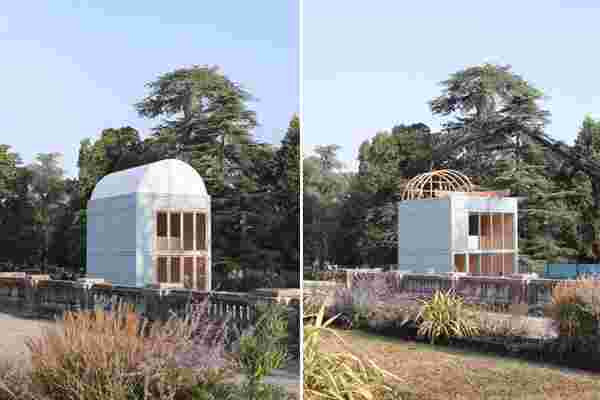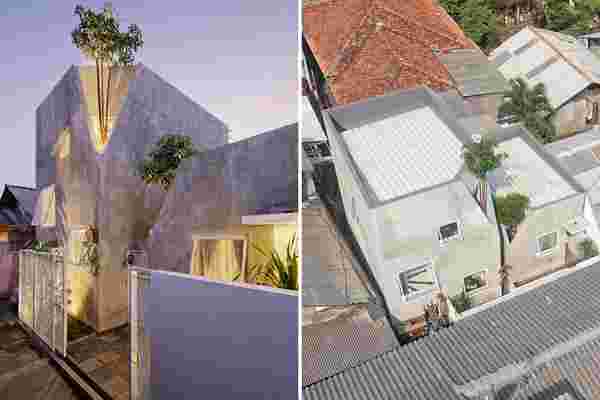
Flowering above the terracotta and metallic roofs of Cipulir, South Jakarta, two trees emerge from concrete. On a 70-m2 plot of land, wedged between the bustling pedestrians and motorcyclists, DELUTION, an Indonesian architecture, and interior design firm, finished work on their latest architectural undertaking, two adjacent, private family homes called, ‘The Twins.’
Constructed overtime in three separate phases, the designers behind The Twins call it a ‘growing home.’ Built to accommodate four people or two small families, the layout for the two homes was inspired by exactly that – family. Two bedrooms, one bathroom, and both a kitchen and joint dining area fill the interior of one family home, while its next-door ‘twin’ neighbor consists of a living area, one bedroom, along with an additional bathroom. While each couple and the children of both families have their own private bedrooms and bathrooms, the two homes are connected by glass doors that lead to a stone walkway used to separate the homes. Both of the two houses that comprise The Twins are accessible to the two families that call them home. Glossy, sliding glass doors open up to make an even larger living space for both families to relax in and enjoy. Both ends of the stone walkway open up to tiny courtyards where homeowners can relax and unwind with a book or morning coffee.
Just by looking up while moving through the home’s walkway, DELUTION’s clients can enjoy green canopies of two trees that reinterpret what spires could look like. The two trees protrude from The Twins’ distinct roofs like landmarks for the home’s residences or a modern-day designer’s take on a family crest. Accessible only on foot or motorcycle, I can imagine flying overhead in an airplane and being able to identity The Twins just by noticing those two trees – there’s home.
Designer: DELUTION
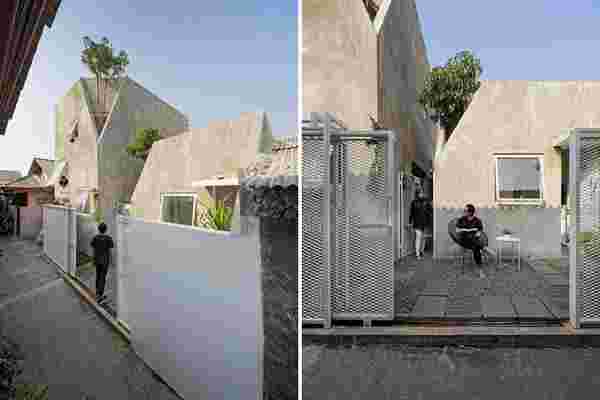
Providing of Garden Access
Who loves alterations? We love alterations. Especially when they turn a Victorian house in a conservative area with access to the backyard garden only through a utility room between the basement and ground floors. It was just silly! Now it’s spectacular. Architect Tamir Addadi, quickly becoming a favorite of mine, took this space and transformed it into a modern masterpiece.
To turn this home into one where nature plays a significant part in the daily activities of the family, the entire back garden was excavated and the basement floor was extended into it. A new lounge area was created, the stone floor of the garden extending directly into it. In the lounge is a wooden bar table that continues the garden’s floor level, a horizontal storage unit forming an additional level between the basement floor and the garden.
Eventually climbing plants will grow to surround the new extension of the garden, the entire new area working together to create a single transitional space. A new bathroom and utility area were also added around this area, and changes were made throughout the house to tie the entire living space into one whole.
Work included the design of bespoke carpentry units, kitchen, landscape design and project management.
Client: private General contractor: Clean Living e: [email protected] Carpentry at the extension: Folde e: [email protected] Structural engineer: HPS, e: [email protected] Garden: Joan Scanlon, e: [email protected] Design: Tamir Addadi, Raphael Cohen Photography and sketches by Tamir Addadi
Designer: Tamir Addadi
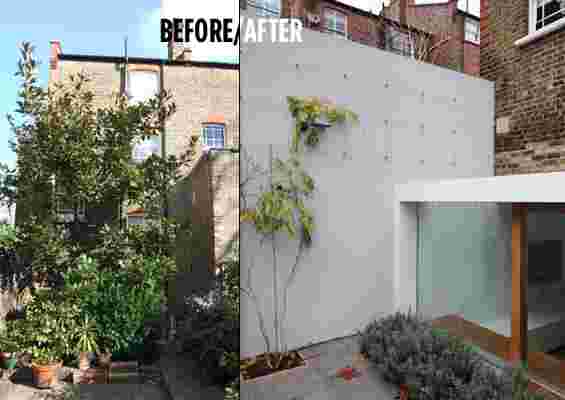
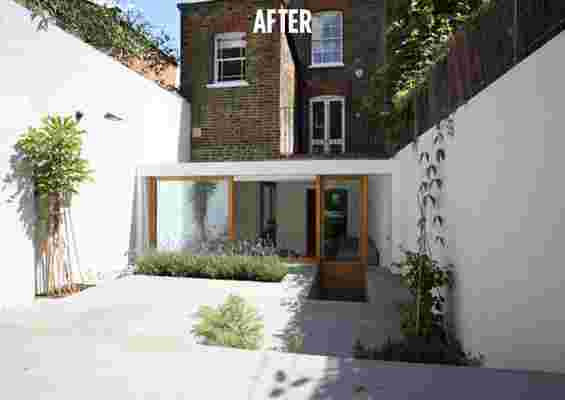
This sustainably designed, modular, ecological tiny house gets assembled & dismantled in 5 days!
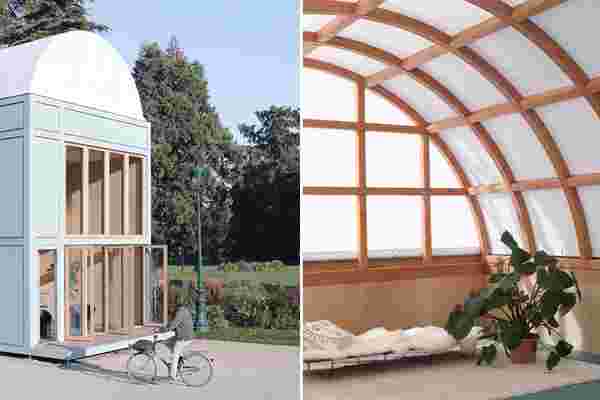
Proto-Habitat is a sustainable and innovative tiny house prototype designed to be modular, ecological, and affordable. And the best part? It can be assembled and dismantled in 5 days! The tiny prefab house is completely transportable and another step forward in a sustainable lifestyle. The goal was to create flexible spaces for living and working and Proto-Habitat achieved that with a floor area of 30 m² which can be extended up to 90 m² if needed. It is constructed using only locally sourced wood from sustainably managed forests and even offers exemplary traceability for the comfort of use and healthy life.
Wald.City is a French design studio that built the prototype project as part of a one-year research program at the French Academy in Rome to explore new forms of housing. Proto-Habitat is unique because it is scalable and adaptable to several different settings – it can be used for everything from individual housing to collective buildings to remote workplaces! Since sustainability was a key focus in this design, it was made using 100% timber materials which were sourced within 500 kms of Bordeaux in southwestern France. All other products and elements of the house were also carefully chosen from local industries that followed responsible waste management and sustainable forestry practices. Wood is the primary material here and brings a warm, cozy, minimalist cabin aesthetic to the contemporary interiors.
Apart from sustainability and scalability, the next important element for Proto-Habitat was mobility. The base unit of the modular house can be assembled in five days by three people and a truck crane – it does not require a foundation. The base module features an open-plan ground floor, a mezzanine, and an elevated sunroom that has a curved roof. “Shifting the role of the architect to ‘facilitator,’ the prototype and research aim to explore new forms and spaces to live together, and alternative financing methods,” the architects explained in a project statement. Proto-Habitat tries to develop a possible solution for the growing needs of a flexible lifestyle. It allows you to match your space to your life’s pace, your work, and your wallet.
Designer: Wald.City
